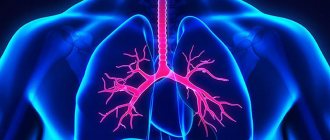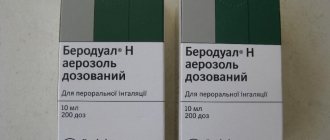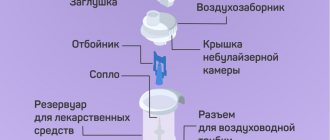Read in this article:
- Why does a dry cough appear?
- How do inhalations work on dry cough?
- When can and cannot use a nebulizer?
- What drugs are inhaled?
- Rules for the procedure
- Nebulizers for inhalation for dry cough
- How to deal with dry cough effectively and safely?
A dry cough is often a companion to ENT diseases, colds and other pathologies. Such an obsessive symptom causes discomfort and can be truly debilitating. But there are quite effective methods for treating such conditions.
Why does a dry cough appear?
First, it’s worth defining the very concept of a dry cough. Its main differences from the productive one are the absence of mucous secretions and localization. A dry cough forms in the larynx, and a wet cough forms inside the chest.
Under the influence of an inflammatory process, allergy or virus, the back wall of the larynx becomes irritated. A signal is sent to the brain that triggers the cough reflex to clear the airways. As a result, irritation of the mucous membrane of the larynx intensifies, which leads to the formation of another wave of coughing. It turns out to be a vicious circle.
When a dry cough appears, it is important to identify its cause in order to select adequate treatment. The symptom may occur when the larynx becomes inflamed or when the virus enters the lower part of the respiratory system. Sometimes in this way the body reacts to external irritants, internal pathologies, and allergens. Cough medications and treatment methods should be selected by a doctor after diagnostic procedures.
What to put in the inhaler
Medicines, saline solutions, and essential oils are used in inhalations. What to choose depends on the source of inflammation and the characteristics of the inhaler. For example, it is not recommended to use antibiotics and hormonal drugs in steam inhalers - they are destroyed at high temperatures.
What medications are used for inhalation:
- Bronchodilators for the treatment of bronchial asthma and chronic obstructive pulmonary disease.
- Non-steroidal anti-inflammatory drugs - reduce pain, fever and inflammation.
- Antibiotics if the patient has bacterial infections.
- Corticosteroids are steroidal anti-inflammatory drugs.
- Mucolytics - they help remove phlegm from the lungs.
Saline solution is suitable for prevention, as well as for ARVI and influenza. It relieves swelling and irritation of the mucous membrane, promotes the removal of sputum. Since this is a saline solution, it can be used for inhalation for children.
It is believed that Borjomi or Essentuki mineral water can replace saline solution, but inhaler manufacturers do not recommend their use. This is because the composition contains non-physiological suspensions.
Essential oils are used only with steam inhalers in the treatment of the upper respiratory tract - they are useful for the prevention of acute respiratory viral infections and influenza.
They are prohibited from being used in nebulizers, since if the oil enters the lower respiratory tract, it can clog the bronchi.
What should not be used for inhalation:
- Suspensions and solutions that leave a sediment.
- Decoctions and infusions of herbs.
- Solutions of aminophylline, papaverine, diphenhydramine.
How do inhalations work on dry cough?
One of the most effective methods of treating dry cough is inhalation. Several decades ago, so-called “steam inhalations” were used - over a container with a special decoction.
But this method is quite dangerous because it can cause burns to the skin and respiratory tract. You should not breathe steam if there is an increase in body temperature, infectious lesions of the skin of the face or mucous membranes in the mouth.
But with the advent of special devices - nebulizers - the danger of inhalation has been reduced to zero. Such devices do not produce hot steam; the active substance is brought to an aerosol state using a compressor, a vibrating membrane or ultrasonic waves.
Inhalation procedures for dry cough provide many benefits
:
- This is the safest method of treatment, since the sprayed drug affects only the respiratory system, without causing undesirable effects on the digestive and other organs.
- Inhalations are very effective in the fight against dry cough.
- When performing the procedure from the first symptoms, the period of the disease is significantly reduced.
- Inhalation of the smallest particles of the drug facilitates the release of sputum, softens the development of the pathological process, and reduces the frequency and severity of attacks.
- With the help of a nebulizer, inhalations can be done without a visit to the clinic, at home.
- Inhalations are suitable for people of any age, the main thing is to choose the right drug and dosage.
In the nebulizer inhaler, the active substance breaks down into small particles that enter the respiratory system and act on the mucous membranes. This affects large areas of the respiratory system, including the lowest parts. The drugs successfully fight bacteria and microbes, suppress their growth, and eliminate bronchospasm.
How does the inhaler work?
Inhalation treatment is based on inhalation of a therapeutic or prophylactic drug in the state of an aerosol or vapor.
Depending on the technology, there are 4 types of inhalers: steam inhaler, compressor, ultrasonic inhaler, devices with mesh technology.
- Steam inhaler - heats the drug to a gaseous state, destroys some types of drugs. Steam particles penetrate only into the upper respiratory tract.
- Compressor inhaler - the main element in it is a compressor that pumps air under high pressure. This is the most widespread and safe technology.
- In an ultrasonic inhaler, the liquid is split into an aerosol under the influence of ultrasound.
- A mesh inhaler passes the medicine through a mesh with tiny holes to create an aerosol. In this case, the drug is not destroyed, since the vibrations are directed at the mesh and not at the medicine.
When can and cannot use a nebulizer?
Nebulizer inhalations are performed for almost any ENT disease:
- bronchitis in acute, chronic, obstructive forms;
- pneumonia;
- tonsillitis;
- laryngitis;
- tracheitis;
- viral infections of the respiratory system;
- infectious diseases.
There are few contraindications for this procedure. These include a tendency to nosebleeds, respiratory or heart failure, and hypertension. Inhalations should not be performed in case of hemoptysis, individual intolerance to drugs, during or after myocardial infarction, or cerebral stroke.
What drugs are inhaled?
To combat dry cough, several groups of inhalation solutions are used:
- Salt;
- Saline solution;
- Compositions with bronchodilators;
- Expectorants;
- Antiseptic drugs and antibiotics.
Saline and alkaline solutions are considered the safest but most effective means. The substances they contain help moisturize the mucous membrane, soften the cough, and make the mucus more liquid so that it comes out more easily during a cough. For this purpose, soda solutions are mainly used.
Inhalations with salt solutions are carried out no more than 5 times a day. The duration of each procedure is 5-10 minutes; about 4 ml of solution is poured into the nebulizer. Inhalation of such substances is not contraindicated for children of any age and pregnant women.
Saline solution of sodium chloride (table salt solution) is sold by pharmacies in ready-made form. For inhalation, this product is used in pure form or used for mixing with medications. Saline solution has an antiseptic effect, reduces the degree of tissue swelling, and fights microbes. For inhalation you will need 2-4 ml of solution.
Bronchodilators are prescribed to block the inflammatory process, relieve swelling, expand the lumen of the bronchi, and accelerate the release of sputum. Such drugs include Nebutamol, Ventolin, Berotek, Berodual.
Expectorants are necessary for difficult mucus removal and unproductive cough. They are characterized by an anti-inflammatory effect, liquefying the mucous substrate, facilitating its release. Drugs of this type are Mucolvan, Ambrobene, Ambroxol, ACC, Lazolvan. They are used exclusively as prescribed by a doctor, who determines the dosage and frequency of inhalation. To prepare the composition for the nebulizer, you will need saline solution.
For coughs caused by bacteria, inhalations with Dioxycin, Gentamicin, Furacilin, Miramistin and other antibiotics are performed. Self-medication is unacceptable here; you must strictly follow medical recommendations.
Rules for the procedure
In order for the inhalation effect for dry cough to give the desired effect, you must follow some rules:
- The procedure is performed after meals, at least 1.5 hours after physical activity;
- Do not smoke, eat or drink for at least an hour after inhalation;
- It is not advisable to smoke 1 hour before inhalation;
- For ENT diseases, inhalation is done through the mouth and nose at the same time;
- Clothing should be loose enough so as not to interfere with the breathing process;
- The nebulizer must be disinfected before use.
Inhalation is performed in a sitting position, in a calm state. After the procedure, it is advisable not to talk for 20 minutes.
How to use an inhaler for a child
Children should only use the inhaler under adult supervision. It happens that not every child can sit quietly for 15–20 minutes during the procedure. And parents of such children know how difficult it is to sit their child down and convince him to calmly breathe into a mask.
We have collected tips that will help you carry out the treatment calmly.
- Take inhalations at the same time every day so that they become part of your routine. This way the child will get used to it and be less capricious.
- Come up with a special name for the treatment time. And think about how to distract your child - you can read a book, turn on your favorite song, get toys.
- Together, stick stickers on the nebulizer so that the child has a pleasant association with the device.
- Let your child turn the device on and off and put on the mask themselves.
- Praise or give small gifts after the procedure because the child sat calmly and helped you.
An adult should assemble the inhaler, fill in the medicine, and wash the components so as not to damage the device and for the procedure to be effective.
Nebulizers for inhalation for dry cough
Inhalations for dry coughs are performed with various types of nebulizers. Each has its own characteristics. The most common device is a compressor
, spraying of the medicinal composition is carried out under the action of a special mechanism.
The second type is mesh inhalers
, operating on the principle of membrane vibration under the influence of ultrasound.
How to use an inhaler if you have a chronic illness
Inhalations for chronic respiratory diseases are the most effective treatment. This is necessary to relieve inflammation, which provokes attacks.
The most common attack triggers in chronic lung diseases.
For chronic diseases, inhalation is used:
- to relieve attacks and exacerbations (for emergency medical care);
- for basic treatment of patients at risk of frequent exacerbations;
- for taking medications that can only be delivered by nebulizer;
- at large doses of the drug.
There is no fundamental difference in the technique of using an inhaler compared to the treatment of ARVI and influenza.





